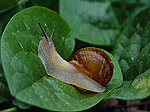|
What's
Bugging You
Pest Control Strategies
-
An insect
or disease only becomes a pest when its numbers increase to the point where
serious damage is inflicted on plants. Next time a plant in your garden is
affected by a pest or disease problem you should ask yourself why it was so
susceptible to attack in the first place. What have you done (or not done) that
has caused the outbreak to occur?
 Simple
Strategies to Avoid Pest and Disease Problems Simple
Strategies to Avoid Pest and Disease Problems
●Grow
plants well-suited to your climate zone and prevailing conditions
●Plant flowering annuals and vegetables according to the seasons
●Grow pest and disease resistant varieties
●Mix different vegetables and herbs together rather than growing a monoculture
●Avoid the use of chemical pesticides. They kill indiscriminately both
beneficial and harmful organisms
●Rotate crops
●Create habitat and refuges for beneficial species
●Accept minor imperfections on plants and fruit
●Learn to identify good insects from bad and aim for balance
●Keep records of when pest and disease problems occur. You may be able to avoid
pests by choosing a different position for a plant; changing soil pH, nutrition
or watering; growing a crop at a different time of year; selecting a different
variety or growing the plant in a different way.
Less
Stress - Less Strife - The easiest way to have a pest free garden is to have
a healthy soil and strong growing plants. Trying to grow plants outside their
climatic range, drought, lack of nutrients, compacted soil and other factors
that stress your plants also make them more susceptible to attack by pests and
diseases.
Healthy Soil - Healthy Plants - Incorporating organic matter into the
soil not only improves the soil structure and texture, it helps you and your
plants beat pest problems.
Organic matter can improve the water-holding capacity of sandy soils and improve
drainage in clay. Nutrient rich organic matter such as composted plant or animal
manure will also provide nutrients for plants and soil organisms like worms.
Organic matter also contains many beneficial fungi and parasitic nematodes.
Just remember that commercially produced compost materials have all the life
pulverized, deodorised and processed out of them. Use them as a last resort. The
most biologically active compost is the one you make yourself, regardless of
your skill in compost making.
Crop Rotation - Related plants often suffer from the same pest and
disease problems. When growing vegetables, try to plant at least four different
family groups in a row before returning to the original crop. For example beans
(Fabaceae) may be followed by cabbages (Brassicaceae), carrots (Apiaceae) and
tomatoes (Solanaceae) before replanting peas or any other member of the Fabaceae
group.
Companion Planting - Diversity of planting including growing plants from
the daisy (Asteraceae) and carrot (Apiaceae) family attracts beneficial
predators and parasitoids to your garden that will help to control damaging
pests. Companion planting works on this principle.
 Welcome
Everyone - Encourage insect eating birds into your garden by protecting them
from cats and providing safe nesting sites and water. Cool moist refuges, rocks,
logs and leaf litter will provide habitat for lizards, frogs, centipedes and
spiders who will all aid in controlling pests, creating a balance within the
garden. Beneficial species include lacewings, hover, robber and tachinid flies,
ichneumon wasps, ground beetles, predatory mites, ladybeetles and dragonflies. Welcome
Everyone - Encourage insect eating birds into your garden by protecting them
from cats and providing safe nesting sites and water. Cool moist refuges, rocks,
logs and leaf litter will provide habitat for lizards, frogs, centipedes and
spiders who will all aid in controlling pests, creating a balance within the
garden. Beneficial species include lacewings, hover, robber and tachinid flies,
ichneumon wasps, ground beetles, predatory mites, ladybeetles and dragonflies.
Be Patient - Gardeners
wishing to avoid using highly toxic chemical sprays must be prepared to tolerate
a certain degree of damage until predators increase sufficiently in numbers and
the influence of other strategies begin to return things to their natural order.
In the mean time there are a number of low toxic options available at your local
nursery or try one of my homemade pest control options below.
(This text
is an edited extract from my book, 'Organic Vegetable Gardening',
published by ABC Books). See
[Books]
 |